These Recipes Are So Smart - The New York Times |
- These Recipes Are So Smart - The New York Times
- The Best Recipes to Cook This Week, From Sheet-Pan Chicken to Muffins - Eater
- The 10 Best Instagram Recipes From January 2021 - HuffPost
- This easiest-ever lemon tart recipe has a mouth-puckering secret - The Washington Post
- When you’re tired of cooking, these 10 easy recipes help you get food on the table ASAP - The Washington Post
|
These Recipes Are So Smart - The New York Times Posted: 29 Jan 2021 09:30 AM PST  Hello and welcome to Five Weeknight Dishes, a newsletter for busy people who still want something good to eat. As a home cook and an editor, I love and seek out recipes that are animated by a great idea: a clever technique, a sharp shortcut that defies conventional wisdom, a magic combination of flavors or textures, or an ingredient moonlighting in a new context. Those are the recipes I try to give you in every newsletter, and this week's is really chock-full of them. Cacio e pepe — but made with farro, and using a technique that is easier than the classic. Chicken adobo — but made with cauliflower, which also turns it vegan. On another note, last week I asked how the weather was where you are, and what you're cooking, as food and weather are inherently entwined. It was wonderful and fascinating to read your emails. (The farthest came from a town outside Berlin, where it was about to snow and the writer had just cooked chopped cauliflower al dente and used it in a salad with smoked salmon and mustard vinaigrette. Ooh!) Keep sending them, or just reach out with your cooking quandaries. I read every note: dearemily@nytimes.com. [Sign up here to receive the Five Weeknight Dishes newsletter in your inbox every Friday.] Here are five dishes for the week: 1. Farro e Pepe Traditional cacio e pepe is simple but finicky to make. Samin Nosrat changes that by using an immersion blender to make the sauce here, a foolproof technique she found in a YouTube video featuring the Roman chef Flavio de Maio. Samin pairs the sauce with farro, for a consistency that she likens to risotto, but you could use it on pasta. If you don't have an immersion blender, use a food processor. _____ 2. Broiled Fish With Lemon Curry Butter Melissa Clark takes the reliable combination of broiled fish and butter and spikes that butter with garlic, ginger and curry powder. The results are abundantly more flavorful, with next to zero extra effort on your part. I'd want potatoes alongside, but if you make rice, you can cook extra to reheat and serve with the cheese buldak or cauliflower adobo below. (Not as good as freshly made rice, but definitely good enough and saves you a pot to clean.) _____ 3. Maangchi's Cheese Buldak (Fire Chicken) Cheese buldak takes chicken braised in a sauce made with spicy gochujang and gochugaru, staples in Korean cooking, then covers it with shredded mozzarella. (The origins of the dish likely have something to do with the arrival of pizza chains like Domino's in South Korea, and with them a mountain of low-moisture mozzarella.) This recipe comes from Maangchi, the YouTube star and cookbook author, and it's really easy to make. I made this recipe by Ali Slagle for dinner on Wednesday and was delighted anew by how smart and simple it is: a vegan take on chicken adobo that comes together within 45 minutes, but keeps the delicious flavors of the Filipino classic. We had it with rice, and next time I'll fry an egg to serve on top, too (which, of course, makes the dish not vegan). _____ |
|
The Best Recipes to Cook This Week, From Sheet-Pan Chicken to Muffins - Eater Posted: 29 Jan 2021 06:00 AM PST It's week trazillion-and-four of pandemic cooking, and you've hit a rut. Nay, a trench. Winter's produce is less than inspiring, you've done all the things one can do to a bean, and while the digital cook-o-sphere is loaded with ideas, there are just too many of them. You scroll a few blogs, flip through some cookbooks, and give up. Beany Thursday strikes again. We've been there. We are there. But help is here. To sort through the noise of TikTok tortilla wraps and chickpea pastas, Eater has compiled a handful of the recipes — from blogs, magazines, publications, and cookbooks — that put the pep back in our pans this week, and which we hope will do the same for you. These are the dishes that Eater editors from across the country actually made recently, and we're passing along any first-hand tips, hacks, or dietary substitutions that, hey, worked for us. Here, then, are this week's must-try recipes from Eater's very-much-average but highly enthusiastic home cooks. Roxana Jullapat's blueberry spelt muffins, Bon AppétitI probably haven't had a muffin in two years, which seems excessive for something so basic, but I'm just not usually a person who counts pastries as breakfast. I sugar crash by 10 a.m. if I don't get a little more nutritive bulk. But flipping through this month's Bon Appétit, I spied the blueberry spelt muffins from LA pastry chef Roxana Jullapat and felt a tug; it seemed approachable, nutritious (it's form her forthcoming cookbook dedicated to whole-grain baking), and gave me a chance to use up the random bag of spelt flour I purchased on a whim a while back. The muffins were all of that, and glorious — tender, sweet-but-not-too-sweet, moist, crumby, and chock full of blueberries. My kids loved picking off bits of the streusel topping then gobbling the muffins whole. The first time I made them, I mixed up most of the batter the night before and popped 'em in the oven on a Sunday morning and they turned out perfect. A few days later I made a second batch with a few vegan swaps and again, divine. They kept me way more satisfied than the morning usual pastry — but then again, I scarfed three. — Lesley Suter, Eater travel editor Crisp gnocchi with Brussels sprouts and brown butter, the New York TimesAli Slagle's crisp gnocchi with Brussels sprouts and brown butter from NYT Cooking has all the hallmarks of a perfect weeknight recipe: one pan, an ingredient list focusing mostly on pantry and fridge staples, but not something I would have thought of myself. I must disclose, however, that like a total commenter, I made some modifications. I used broccoli as well as Brussels sprouts because a) I didn't have enough sprouts but b) did have too much broccoli in my fridge. I cut the butter from six tablespoons to four because I was trying to still have some of my precious Kerrygold left over, and I delayed adding the lemon zest so its flavor didn't get too muted by sizzling away in the skillet. When I make this again — because I will be making this again — I'll also add a squeeze of lemon juice just before serving. But no matter! Recipes that work well as templates for personalized futzing are the ones I'm most likely to incorporate into my regular cooking rhythm, and this one definitely does. — Hillary Dixler Canavan, Eater restaurant editor Malo's beef and pickle tacos, Joy the BakerWhen I was a baby Angeleno (read: a new transplant from New York), I discovered a Mexican restaurant in Silver Lake that had the most curious taco. It was drippy beef nestled in a fried corn tortilla, finished with shaggy cheddar strands, dill pickles, and hot sauce. It was gringo. It was great. I came back many times to chase a trio of these beef and pickle pockets with beer — because this was the Before Times (before I developed the gluten-intolerance endemic to Los Angeles). The restaurant closed in 2018, but one day, I found the recipe on a food blog: Joy the Baker's adaptation of Malo's beef and pickle tacos. So I started to make what is ostensibly cheeseburger tacos at home. The recipe is simple, straightforward, and fast, the beef mixture made more robust with chopped potato. It fell out of my cooking circuit a couple years ago, but recently, to answer a craving somewhere between burger and taco, I made them again, this time with turkey meat (and no potato) for a leaner iteration. I seasoned the meat with way more spices than the recipe calls for (use your taco night intuition), and topped it with spicy pickle chips and sharp cheddar. Slightly different than the Malo classic, but equally good. — Nicole Adlman, Eater cities manager :no_upscale()/cdn.vox-cdn.com/uploads/chorus_asset/file/22262554/chicken_pea_traybake_nigella_2.jpg) Chicken and pea traybake, NigellaNigella's simple, incredibly gratifying sheet-pan recipe (trendy!) involves dumping a lot (seriously, a lot) of frozen peas on a half sheet pan along with chopped leeks, dill, garlic, and a big splash of dry vermouth, with chicken thighs roasted on top. The recipe calls for seasoning the chicken simply with salt and olive oil, but with half a carton of buttermilk hanging around in the back of my fridge, I opted for marinating the chicken thighs overnight a la Salt, Fat, Acid, Heat. The end result was a sheet of bronzed chicken with a heap of soft-but-not-mushy peas and leeks infused with the rendered chicken fat. It's excellent for dinner with some potatoes, and arguably better as lunch for a few days stretched out with rice. — Adam Moussa, lead social media manager Chicken and dumpling soup, JubileeA recent chilly Austin day seemed like the perfect excuse to make something warm and soothing from the gorgeous Jubilee cookbook that I had gotten for myself as a just-cause present. The chicken and dumplings soup was an all-day project, which I anticipated: there's properly chilling the ingredients, kneading and chilling the dumpling dough (which was fun), and simmering the chicken for a while. I'd recommend using a big Dutch oven and adding that optional cup of white wine the recipe suggests. Rather than using the entire frying chicken, I opted for boneless chicken thighs cut up into smaller pieces. I'm not sure I cut the dumpling dough correctly, but my weirdly sized and shaped dumplings worked for us. Also, as I tend to like my food on the spicier side, I also added more black pepper than the recipe calls for and did not regret it, plus a touch more whipping cream (I wanted to use up the entire little carton). The result was beautiful: creamy, spiced just right, with supremely juicy chicken thighs. I slurped down the broth. — Nadia Chaudhury, Eater Austin editor Peanut butter blackberry bars, the New York TimesThis recipe has the highest deliciousness-to-ease ratio of maybe any dessert I've ever made. It takes no time, requires one bowl, and uses ingredients you already have in your kitchen (assuming you keep frozen fruit in the freezer). They have the consistency of a gooey blondie, but... peanut butter. And for those of us deprived of fresh fruit right now, they bring some much-needed summery sweetness to a winter kitchen. — Amanda Kludt, Eater editor-in-chief |
|
The 10 Best Instagram Recipes From January 2021 - HuffPost Posted: 29 Jan 2021 02:45 AM PST 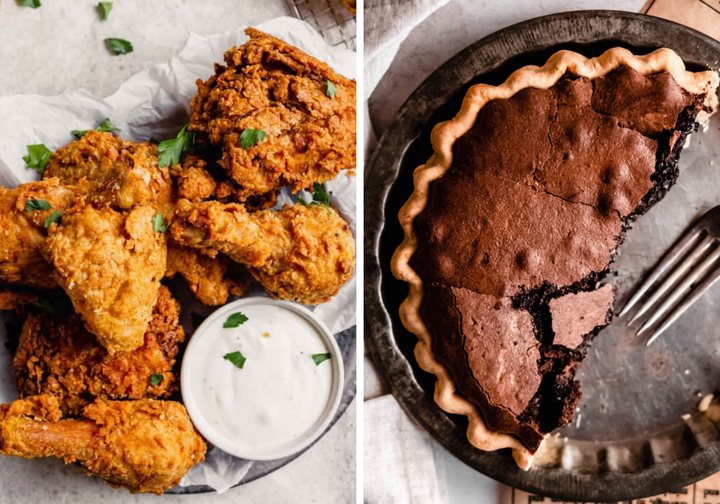
The HuffPost Taste Instagram account has revealed that our readers are deeply into the idea of comfort food at the start of this new year. January is typically a month defined by humanity's sudden interest in salads and smoothies, but not after the year we've just had. This month, the most-loved recipes are salty, deep-fried, creamy or intensely rich. At one point in January, we prompted a frank conversation about "30-minute meals" in our comments section. When we shared Half Baked Harvest's recipe for 30-Minute Creamy Thai Turmeric Chicken and Noodles, we asked followers whether that time frame was realistic, and one singular sentiment was echoed in most of the answers:
No matter how slow you are in the kitchen, we think you'll love the 10 recipes below just as much as our Instagram followers did. Take a look and get cooking! 10. Cajun Clam Chowder
9. Dark Chocolate Almond Butter Cups
8. Baked Chicken Parmesan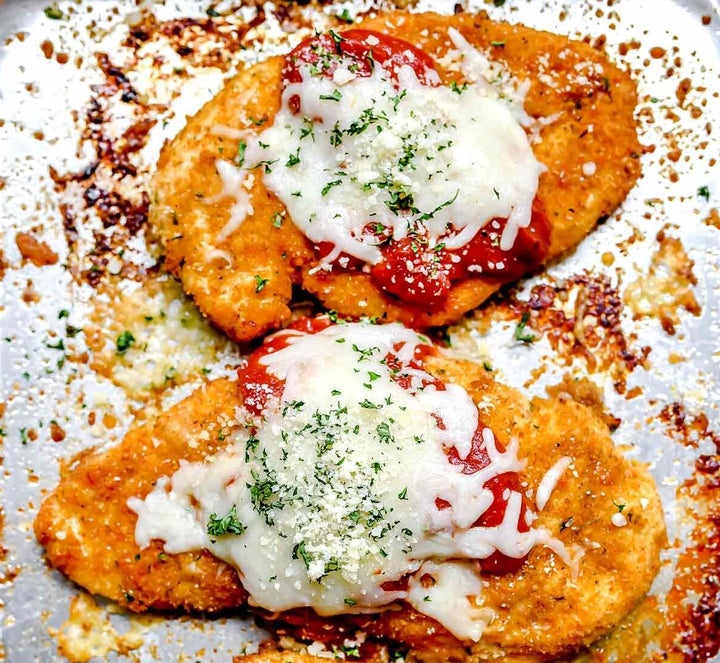
7. Buttermilk Fried Chicken
6. Sweet and Spicy Seasoned Crackers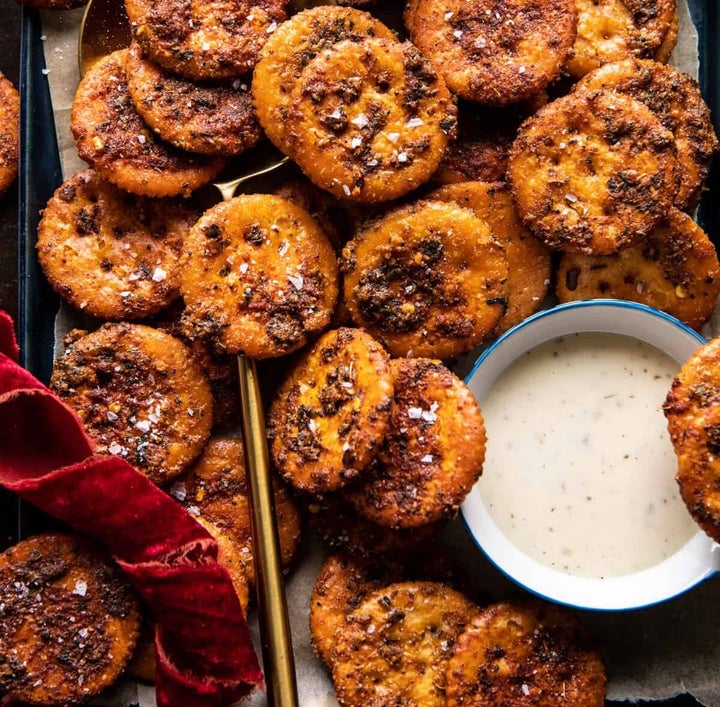
5. 'My All-Time Favorite Carrot Cake Recipe'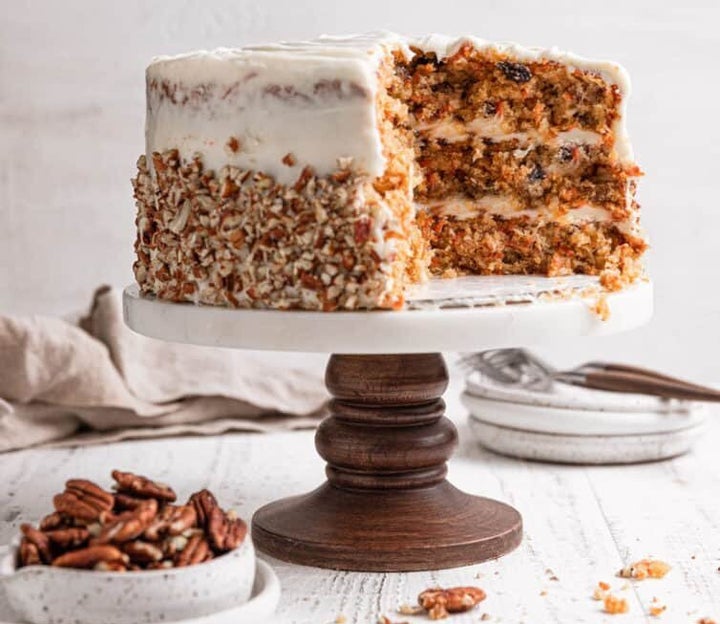
4. Healthier Homemade Crunchwrap Supreme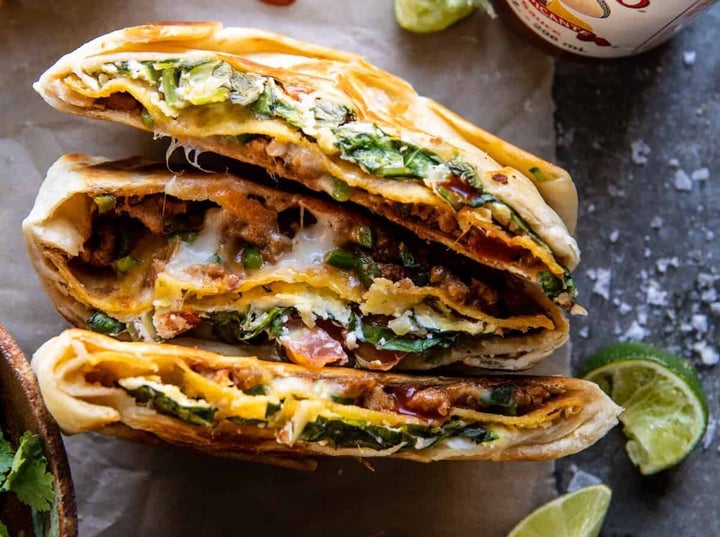
3. Creamy Balsamic Chicken Breast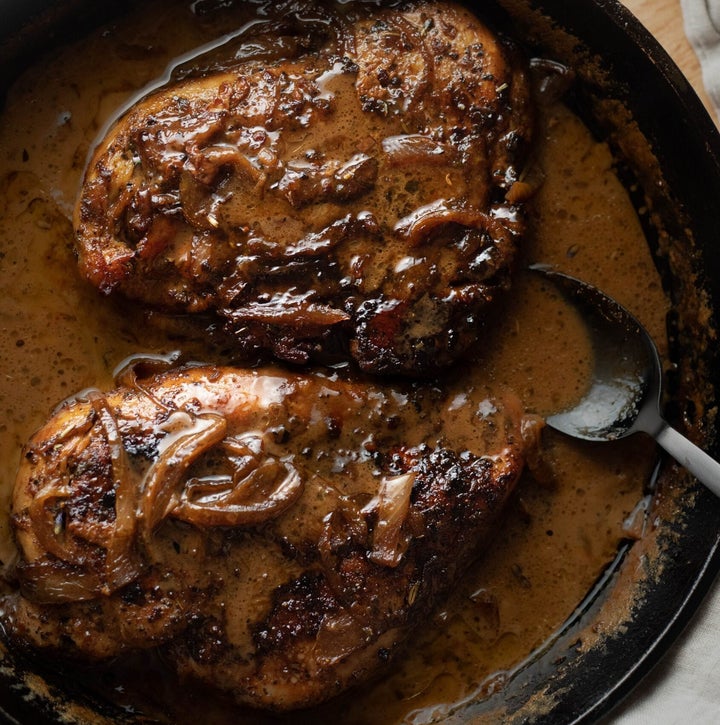
2. The Best Dark Chocolate Brownie Pie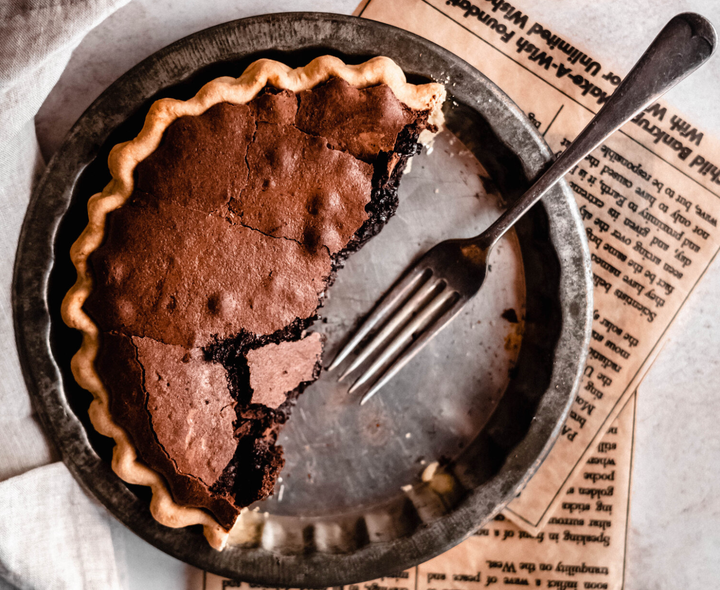
1. 30-Minute Creamy Thai Turmeric Chicken and Noodles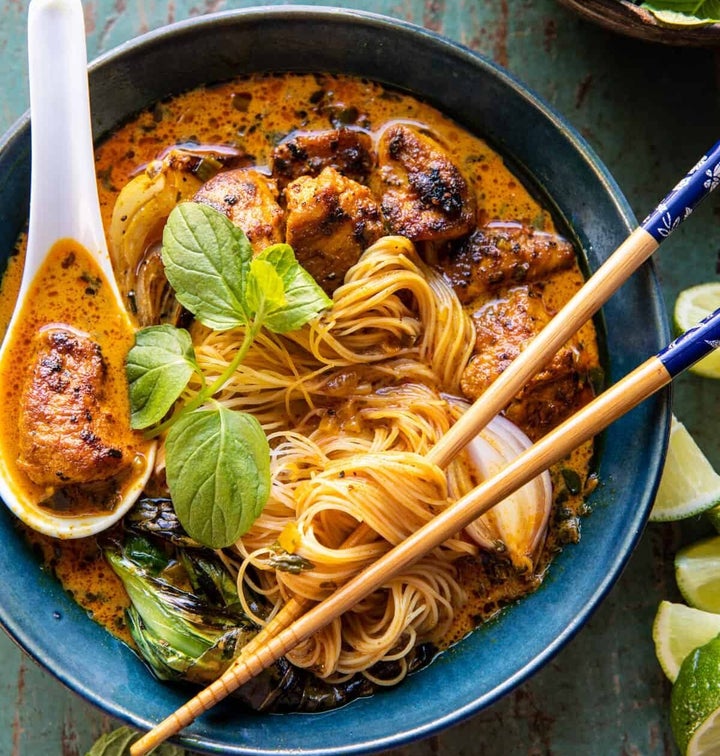
|
|
This easiest-ever lemon tart recipe has a mouth-puckering secret - The Washington Post Posted: 29 Jan 2021 07:00 AM PST  I love the brightness a good lemon tart delivers. It's my go-to birthday dessert, which I make myself partly because I enjoy the process and partly because I'm persnickety about how I like it — with a buttery cookie-like crust and a boldly tart filling with little flecks of lemon rind. I revel in the minimalist elegance of this simple dessert: To me, the most beautiful lemon tart is one that's barely dusted with confectioners' sugar. Whipped cream or meringue dulls its bracing acidity, which is the whole point of this pastry. And even though I believe that lemon tarts are a year-round dessert, at no time are they more welcome than midwinter, when the new year starts to feel lived-in, the resolutions have come and gone (attempting Dry January after the mob stormed the U.S. Capitol proved ineffective) and the charm of colder weather and brown comfort food wears off. Scale and get a printer-friendly version of recipe here. Although I've made many kinds of lemon tarts through the years, it took this assignment to arrive at my favorite version. I knew I wanted to crack the code on using a whole lemon, similar to one I've made for more than a decade based on Dorie Greenspan's recipe in "Paris Sweets." Instead of making lemon curd, you add the whole fruit (minus the seeds) and puree it with other filling ingredients. The tiny bits of lemon rind suspended in a smooth emulsion and the subtle bitterness imparted by the pith give the filling dimension and keep it from getting cloying. Still, I knew I could improve on near-perfection. First, I tackled the crust, a fairly traditional pâte sucrée, which has a buttery cookie-like snap. I scaled back the sugar and found it still retained a desired crispness. A tablespoon of lemon zest gave the crust bright flavor, and a whole egg, rather than just a yolk, created a sturdier texture for easier rolling out. And, as I contemplated the sticky dough that stuck to even a well-floured counter, I decided that rolling it out between two pieces of parchment made for a less frustrating experience. In approaching the filling, though I loved the simplicity of pureeing the whole lemon with butter, sugar and eggs, I wanted a more unabashedly lemony flavor. I found it in the same lemon that gave up its zest to the crust. Adding that second lemon to the filling ingredients delivered precisely the bright pucker I longed for. My laziness served up a timesaving simplification when I decided to see what would happen if I threw cubed, cold butter into the food processor (the original recipe calls for the butter to be melted). The mixture came out curdled, which worried me, but I poured it into the crust and baked the tart anyway. The resulting texture was identical to the one made with melted butter. In my final test, as I grew bolder and lazier still, I cut the butter into four pieces and it pureed just the same. You can certainly argue that the easiest lemon tart is the one you buy at a bakery, but I implore you to try this one. It may look like a fancy French dessert, but it's blissfully forgiving and demands little baking proficiency. It's rare that less effort delivers a better outcome, but this tart is proof-positive such a thing exists. Try it — and see for yourself. Make Ahead: The tart dough can be made, tightly wrapped and refrigerated for up to 2 days or frozen for up to 3 months. If freezing, wrap in foil after wrapping in plastic to prevent freezer burn. The tart shell can be par-baked up to 12 hours in advance. Storage Notes: The lemon tart can be stored at a cool room temperature for up to 1 day or covered and refrigerated for up to 3 days. IngredientsFor the crust
For the filling
Step 1Make the crust: In a food processor, combine the flour, sugar, zest and salt and pulse to combine. Add the butter and pulse until a coarse meal forms, about 12 pulses. Add the egg and pulse just until the dough comes together in large clumps, 20 to 25 pulses or so. (Pay attention to the sound the motor makes; it should change right around this point.) Pinch the dough — it should hold together. Press the dough into a disk, wrap in plastic wrap and refrigerate for at least 1 hour and up to 2 days. Step 2When ready to roll out the dough, place it between two large sheets of parchment paper and roll out to about 12 inches in diameter and 3/8-inch thick. Line a 9- to 9 1/2-inch tart pan with the dough. The dough will be very soft and may start to tear; that's okay, just patch it up. Gently press the dough into the bottom and up the sides of the tart pan. As you press the dough against the sides of the pan, also gently press the overhang with your fingertips against the edge of the pan — it should break off easily. Dock the crust on the bottom and sides with a fork — this helps prevent the tart from puffing up. Freeze for 1 hour before par-baking. Step 3When ready to bake, position a rack in the middle of the oven and preheat to 375 degrees. Place the tart pan on a large, rimmed baking sheet and cover the dough with aluminum foil, gently pressing the foil to fit snugly over the bottom and edges of the shell. Fill with pie weights (or rice, beans or pennies). Step 4Bake for 20 to 25 minutes, until the dough no longer appears raw, then carefully peel away the foil and bake for an additional 5 minutes, or until the crust slightly pulls away from the edges of the pan and the edges of the crust are light golden brown. Transfer to a wire rack and let cool for at least 30 minutes and up to overnight before filling. Step 5Make the lemon filling and tart: Position a rack in the middle of the oven, and preheat to 325 degrees. Line a large, rimmed baking sheet with parchment paper and place the tart crust on top. Step 6Cut the unzested lemon in half: If the pith is thinner than 1/4 inch, slice the lemon and discard the seeds (otherwise, see NOTE). Transfer the lemon to the food processor bowl, and add the zested lemon slices, sugar and salt. Process until smooth, scraping the bowl as needed. Add the butter, and process until smooth, scraping the bowl as needed. Step 7With the processor motor running, add the eggs, one at a time, followed by the yolk, and process until smooth. Add the cornstarch and process to incorporate. Remove the bowl from the processor and gently tap it on the counter a few times — this will remove some of the air bubbles — and pour the filling into the crust. The filling may look curdled; that's okay. (Using a food processor results in a mostly smooth filling with tiny bits of lemon, which add some zing. If you prefer a smooth filling, use a blender to process.) Step 8Bake for 40 to 45 minutes, or until the filling looks set; it may jiggle a little in the center. (Don't worry if the top cracks.) Insert a toothpick or cake tester in the center of the filling — it should come out clean. If not, bake for an additional 5 minutes and check again. Transfer the tart to a wire rack and let cool to room temperature before serving, or refrigerate until ready to serve. Step 9Just before serving, gently pop out the tart out of the pan and transfer it to a plate. Dust the top of the tart with confectioners' sugar, slice and serve. NOTE: If the pith of the lemon is thicker than 1/4 inch, finely grate the lemon zest and transfer it to the bowl of a food processor. Trim the tops and bottoms of the lemons and stand them upright. Using a paring knife, follow the curves of the lemons to trim away the pith. (Thick pith may make your filling bitter.) Cut the fruit into slices and discard the seeds. Transfer the lemon flesh to the food processor bowl and proceed with the recipe. Nutrition InformationCalories: 479; Total Fat: 25 g; Saturated Fat: 15 g; Cholesterol: mg; Sodium: 153 mg; Carbohydrates: 60 g; Dietary Fiber: 2 g; Sugar: 37 g; Protein: 5 g. Scale and get a printer-friendly version of recipe here. Request for Reader Submission
Do you have a cast-iron pan story? We want to hear it. Cast-iron pans have a beloved place in American home cooking, and in many of your kitchens. If you have a trusty cast-iron pan, it likely has a story. Was it a gift from a parent or grandparent? Did you find it at a campsite and spend hours reseasoning it? Did you discover your favorite recipe in that pan? We want to hear your cast-iron story! Share it with us below and we may include it in a forthcoming Voraciously story. Read our full submission and discussion guidelines here.
Tell the Post |
|
Posted: 13 Jan 2021 12:00 AM PST  Silken tofu on rice with a drizzle of soy sauce and chile oil; quesadillas; nubbins of cheese, a stack of crackers and an apple or pear; scrambled eggs on a slice of toast; angel hair pasta tossed with butter and lemon zest; canned tuna forked through with mayonnaise and pickle juice — these are a few of my favorite ways to get a meal on the table in 15 minutes or less. I dug through our Recipe Finder archives for more ideas, miracle meals that take minutes and feed at least two. They depend on quick-cooking proteins, pantry ingredients, condiments for hits of flavor and basics such as pasta, rice, bread and eggs. Many cook in one pan, and others are assembled in moments, but they're all guaranteed to satisfy. Sheet Pan Chicken Fajitas. This riff on fajitas, featuring chicken breasts, onions and bell peppers, comes together in minutes and cooks quickly on a sheet pan. Serve it with steamed tortillas and sour cream. Creamy Greek Noodle Soup. Here's a creamy soup recipe without any cream in it. This avgolemono gets a head start thanks to premade chicken stock. Onions, carrots and noodles add texture while the signature egg and lemon juice mixture ensures every spoonful is creamy. Broiled Shrimp With Shaved Zucchini and Pecan Salad. The key element here is the shrimp, which get tossed in a spicy sauce before they're slid under the broiler for a few minutes. Serve them with a pecan-studded shaved vegetable salad, or on a plate next to couscous or arugula dressed in lemon and olive oil for a quicker dinner. Fast Blender Tomato Soup. Though this soup is creamy, it contains no dairy. Instead, olive oil and bread blend in with garlic, onions and canned tomatoes to make the simplest tomato soup ever. Grilled Kimcheese. You could make a classic grilled cheese … or you could make a grilled kimcheese. Kimchi adds incredible flavor to this pan-fried sandwich; slices of pear or apple add a touch of sweetness. Simplest Lentil Curry. Red lentils are the fastest way to dal. They're split, so they cook especially quickly. In this recipe, onion, garlic, ginger and spices give them a richness that's offset by a spoonful of creamy yogurt. Serve it atop steamed rice for a full and fulfilling meal. Spicy, Smoky Turkey Sandwich. Mash a chipotle into some mayonnaise for a little kick of flavor, then layer on sliced turkey, pepper jack and spinach for a fresh spin on the lunch special. Mushroom "Risoniotto." Risotto can be incredibly comforting on a cold night, but it can take quite awhile to cook. Use orzo instead for a creamy riff on classic mushroom risotto. Or try this Instant Pot risotto, which needs just 30 minutes of mostly hands-off cooking. |
| You are subscribed to email updates from "recipes" - Google News. To stop receiving these emails, you may unsubscribe now. |
Email delivery powered by Google |
| Google, 1600 Amphitheatre Parkway, Mountain View, CA 94043, United States | |
from What to Cook https://ift.tt/3j0L9n6
